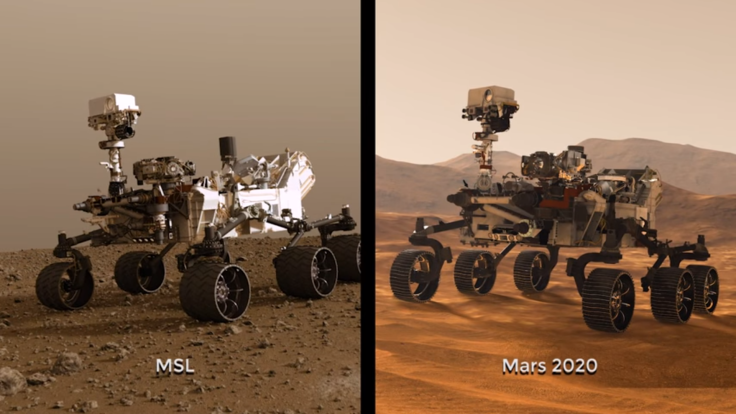NASA’s Mars 2020 Mission: Hardware Similar To Curiosity Rover, Different Science Objectives
NASA’s next mission to the red planet, Mars 2020, has very different scientific objectives than its predecessor, the Curiosity rover, and it will be the first Mars mission specifically designed to enable the return of Martian samples to Earth. But for all its new instruments, the hardware the Mars 2020 rover will use will be, for the most part, the same as that of Curiosity, the space agency said in a statement Tuesday.
“Mars 2020 relies heavily on the system designs and spare hardware previously created for Mars Science Laboratory's Curiosity rover, which landed in 2012. Roughly 85 percent of the new rover's mass is based on this ‘heritage hardware,” the NASA statement said.
But that is far from being a bad thing. The Curiosity equipment has been functioning on the Martian surface since it landed there five years ago, and nothing is a better proof of its worthiness. And of course, there are other positive factors as well.
Jim Watzin, director of NASA’s Mars Exploration Program, explained in the statement: “The fact that so much of the hardware has already been designed — or even already exists — is a major advantage for this mission. It saves us money, time and most of all, reduces risk.”
The rocket, the cruise stage, and the entry, descent and landing modules for Mars 2020 are all very similar to those used for Curiosity. And the two rovers look almost identical, especially since a lot of spare hardware from earlier is being used for Mars 2020.

But Mars 2020 is a sample return mission, inasmuch as it will drill into the Martian surface and prepare samples that can be returned to Earth at a later time. It will also search for signs of past life on the red planet which once likely had the conditions — liquid surface water and an atmosphere.
To achieve those objectives, Mars 2020 has “seven new instruments, redesigned wheels, and more autonomy.” Some of the new instruments are upgraded versions of those used by Curiosity. For instance, there is SuperCam, an upgraded version of Curiosity’s ChemCam, that will use a laser to vaporize rocks and soil, and then analyze the vapor to understand the material’s chemical properties.
There are also color cameras with a zoom lens. A drill will capture cores of Martian rock (NASA says it wants to collect at least 20 cores, and maybe as many as 30-40), and a small robotic arm will seal the cores to cache them for future retrieval.
A new landing technology, called terrain-relative navigation, is being developed for Mars 2020 by the Jet Propulsion Laboratory (JPL) in Pasadena, California. The technology will guide the descent stage of the spacecraft to safe landing sites, correcting its course as needed.
“Terrain-relative navigation enables us to go to sites that were ruled too risky for Curiosity to explore. The range trigger lets us land closer to areas of scientific interest, shaving miles — potentially as much as a year — off a rover’s journey,” Al Chen of JPL, the Mars 2020 entry, descent and landing lead, said in the statement.
© Copyright IBTimes 2025. All rights reserved.





















